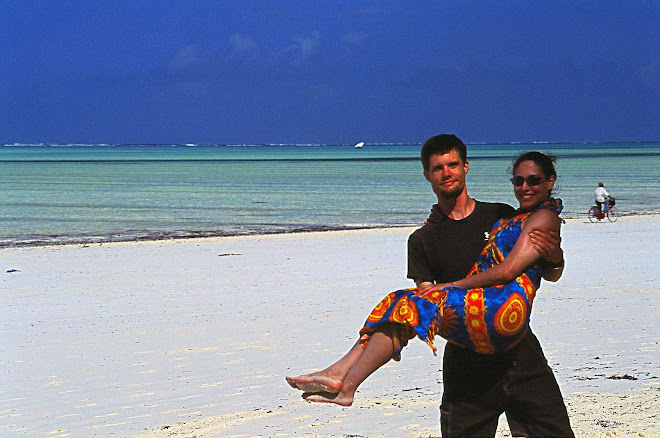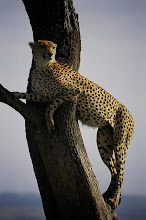 - by John Macdonald -
- by John Macdonald -I enjoy the occasional feeling of being in the middle of nowhere in a place where time is not measured. Exploring these ‘nowhere’ nooks around the world is like a return to a primordial era where human institutions have no meaning. The elements are the meaning. However, this is not to say there is nothing to see in remote places. Sometimes there is everything to see, and in southwestern Bolivia our goal was to see everything in nowhere. We began our journey from the eccentric town of Uyuni located absolutely in the middle of nowhere (this is a good start) with no clear reason why it exists.

There’s an energetic American here from Amherst selling delicious pizzas at the Minuteman Pizzeria, 70 something tour operators to take you into the wilderness beyond the town, endless flower patches of plastic bags, and a train graveyard just outside of town with no less than 30 rusting hulks of 1940s era locomotives disemboweled and strewn across the desert. With our guide, Valerio, and six fellow travelers we set off to nowhere.
Cara and I served as the translators as Valerio’s English included only the numbers 1 through 10 and our English speaking friends could only understand ‘si’ or ‘no’, which was good practice for us. Our first stop was the highest and largest salt flat in the world, Salar de Uyuni. Rimmed by snowcapped volcanoes and crowned with a deep blue sky the Salar is a 12,000 sq km expanse of unfathomable blinding white at a nose bleed altitude of 3,660 m. It is up to 120 m deep with the top 10 m being pure salt. Due to the amount of water below and an usual respiration of gases that bubble up, small rims are pushed up forming massive hexagons along the salar’s surface.

The geometric shadows stretching to the horizon from the setting sun creates the sensation of being the central theme in an Escher sketch. Near the very center of this immense expanse is an island completely made of coral which is home to a rather tall and prickly population of cacti called, Cactus Island. From here the views are even more bizarre. These species of Cacti grow ever so slowly at a rate of 1 cm per year. The tallest cactus is 12.3 meters tall making it 1203 years old (so the sign said, but I think they missed place a number). After a great lunch made by Valerio, Cara and I had some fun with the left over Fanta bottle. There is no perspective in a land of white and silly and unusual photos can be made (see cover photo). Our first night was in a salt palace. ‘Palace’ is slightly over stated because you would have to have more than one toilet for 40 people to be properly called a palace (unfortunately for Cara this would prove to be very inconvenient as she was suffering from ‘el Grande D’).

The ‘palace’ is made entirely from salt blocks including the salt chandeliers, salt tables, salt beds (with a real mattress of course), and even a salt floor. Our friends even used the salt from the floor for betting in a long game of Texas Hold’Em. Day two was long and hard. We left the smooth salt flat and continued our journey on bumpy off-road tracks that seemed to climb forever. Along the way we passed small Quechua villages that had larger populations of llamas than people. The altiplano path meandered around ancient lava fields between a string of volcanoes. Occasionally we came across small herds of vicunas, a relative of the llama prized for its silk-like fur. By lunch we made it to a first of several large but shallow lakes filled with three species of flamingoes. I always seem to get my clothes soiled with surrounding environment, and by the time Valerio had lunch prepared I had my fair share of flamingo excrement all over my boots and pants. In the early afternoon Valerio told me that we were about to enter the desert once we made it over the next pass.
I was confounded as how the landscape, which I had already perceived as a genuine desert, could possibly get any more inhospitable. It did. The landscape stretched out before us. The clarity and quality of the air made it impossible to judge depth of field and a small object in the distance ended up being a massive object that took ages to pass. A highway of off-road tracks ran to the horizon like an enormous plowed field of burnt sand. Occasionally, we came across the remains of a bleached lava field with huge malformed chunks haphazardly scattered across the desert. Our final destination today was Laguna Colorado, another otherworldly oddity that is strikingly red due to the prolific algae population. Although it is a feast for flamingos, it takes a sturdy constitution to withstand the freezing wind that blows across the bloody lake. After a slew of photos I found my traveling mates patiently waiting for me in the comfort of the 4x4.

Nearby was our adobe brick accommodation that we shared with several other groups. At a whopping 4,300 m we spent a drafty and frigid night on the Bolivian Altiplano. Noone slept. After thawing out and unsuccessfully helping another group jump start their 4x4 we set off for the highest point of our journey, Los Geysers de Sol Mañana, the highest geyser field in the world at 4,870 m. These were the first geysers Cara had ever seen and she was absolutely fascinated. Although steam roared from the vents climbing 50 meters above the frozen tundra, it was the bubbling pools of mud that captivated her shooting stinky sulfuric balls of wet ash overhead (and into my camera bag). The lack of fences (hey we were in Bolivia) made our viewing pleasure up close, personal, and slightly ill-advised. We climbed over our highest pass on our journey at 4,900 m and dropped down into yet another valley full of bizarre shapes and array of earthy colors.

Our final destination before crossing over into Chile was Laguna Verde, a death lake full of undesirable minerals such as arsenic. Bound by a massive volcano and frothy white arsenic foam (waiting to fly into my face) Laguna Verde shines a richly poisonous, yet inviting green with tiny snow white waves whipped by the wind. Sadly, we left our group to take a bus across the border into Chile. I felt our guide, Valerio, was a bit emotional on our departure and that our group would surely miss us (not just for our translating abilities). From the 4,400 m Bolivian altiplano we descended 2,000 m through the gullies and ravines of lava fields long cooled into Chile’s San Pedro de Atacama, behind us stood no less than 25 volcanoes. Having completed our travels through nowhere we reflected on one of the most epic journeys through one of the most unforgettable landscapes showcased on this Earth. Then we took a long overdue shower.





No comments:
Post a Comment